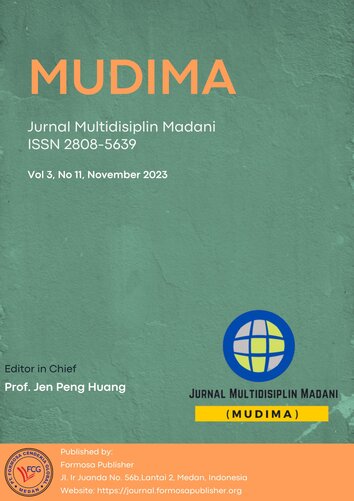Is it Time for Malawi to Change its Economic Growth Engine? Evidence from New Structural Economics
DOI:
https://doi.org/10.55927/mudima.v3i11.6432Keywords:
Comparative Advantage, Economic Growth, Growth Identification and Facilitation Framework, Malawi, New Structural EconomicsAbstract
Despite significant structural and economic reforms to promote economic growth, Malawi remains a low-income nation. More than 80% of export revenue is earned by the agricultural sector, which drives the economy and accounts for 36% of the country's output and employs more than 80% of the labor force. The goal of the study is to pinpoint Malawi's high-growth and employment-potential industries. The study uses the growth identification and facilitation framework—a useful tool for policymakers that operationalizes important new structural economics insights—to help developing country policymakers pinpoint the sectors and goods in which they have a comparative advantage. Using Bangladesh, China, Rwanda, and Vietnam as benchmark nations, Malawi's manufacturing, tourism, and agriculture sectors show promise for growth and can be greatly converted into a competitive edge. His research has important policy ramifications, particularly for areas in which Malawi has a comparative advantage. These include the need for measures that would improve the business environment and promote the export of goods and services with added value
References
Africa Research Bulletin. (2021). Economic, Financial and Technical Series. Malawi: World Bank Support. Wiley, Online Library, 58(4). https://doi.org/10.1111/j.1467-6346.2021.10015.x
Banda, L. G. (2021). Tourism development and economic growth nexus in Malawi - A time-series data analysis, 1985-2015. International Journal of Tourism and Hospitality, 1(2). https://doi.org/10.51483/ijth.1.2.2021.12-20
Bere, R. C., Otoiu, A., & (Precup), I. B. (2014). Determinants of Economic Growth in Cities Acting as Growth Poles in Regions from Romania. Procedia Economics and Finance, 10. https://doi.org/10.1016/s2212-5671(14)00415-8
Boldeanu, F. T., & Constantinescu, L. (2015). The main determinants affecting economic growth. Bulletin of the Transilvania University of Braşov Series V: Economic Sciences, 8 (57)(2).
Caruso, G., & Sosa, L. C. (2022). Poverty Persistence in Malawi: Climate shocks, low agricultural productivity and slow structural transformation (English). Washington, D.C. : World Bank Group. 1–177. http://documents.worldbank.org/curated/en/099920006302215250/P174948072f3880690afb70c20973fe214d
Chirwa, T. G., & Odhiambo, N. M. (2016). The drivers of real sector growth in Malawi: An empirical investigation. Journal of Applied Economic Sciences, 11(6).
Chiukira, L. (2020). Special Economic Zones in Developing Countries: Challenges and Opportunities for Zimbabwe. SSRN Electronic Journal. https://doi.org/10.2139/ssrn.3545662
Diao, X., Bahiigwa, G., & Pradesha, A. (2014). The Role of Agriculture in the Fast-Growing Rwandan Economy: Assessing Growth Alternatives. SSRN Electronic Journal. https://doi.org/10.2139/ssrn.2483996
Esmail, H. A. H., & Shili, N. N. J. (2017). Key Factors of China’s Economic Emergence. Mediterranean Journal of Social Sciences, 8(3). https://doi.org/10.5901/mjss.2017.v8n3p251
Heinen, S. (2022). Rwanda’s Agricultural Transformation Revisited: Stagnating Food Production, Systematic Overestimation, and a Flawed Performance Contract System. Journal of Development Studies, 58(10). https://doi.org/10.1080/00220388.2022.2069494
Hossain, L., Sarker, S. K., & Khan, M. S. (2018). Evaluation of present and future wastewater impacts of textile dyeing industries in Bangladesh. Environmental Development, 26. https://doi.org/10.1016/j.envdev.2018.03.005
KOÇAKOĞLU, M. A. (2021). Belt And Road Initiative and Turkey China Relationships Through Soft Power Concept. OPUS Uluslararası Toplum Araştırmaları Dergisi, 18(39). https://doi.org/10.26466/opus.831498
Lin, J. Y. (2012). Applying the Growth Identification and Facilitation Framework: The Case of Nigeria. In New Structural Economics. https://doi.org/10.1596/9780821389553_ch04
Lin, J. Y., & Xu, J. (2016). Applying the Growth Identification and Facilitation Framework to the Least Developed Countries: The Case of Uganda. Depa r t Ment of Eco n Om Ic & So c i Al A f f a i r s CDPBackground Paper No. 32 ST/ESA/2016/CDP/32, VIII(32).
Manik, M. H. (2023). Movement of the Economy of Bangladesh with its Sector-Wise Contribution and Growth Rate. Journal of Production, Operations Management and Economics, 32. https://doi.org/10.55529/jpome.32.1.8
Mkwambisi, D., Muyanga, M., Amedie, W., Makocho, P., Lifeyo, Y., & Khomba, J. K. (2020). Manufacturing and Industrialization in Malawi: Trends, Opportunities, and Strategies. https://www.mwapata.mw/_files/ugd/dd6c2f_54fcda968bc04bc3bc7f294e96e45ddf.pdf?index=true
Mwase, W., Jumbe, C. B. L., Gasc, F., Owiyo, T., Manduwa, D., Nyaika, J., Kwapata, K., & Maonga, B. (2014). Assessment of agricultural sector policies and climate change in Malawi-the nexus between climate change related policies, research and practice. Journal of Sustainable Development, 7(6). https://doi.org/10.5539/jsd.v7n6p195
Nallathiga, R. (2007). Potential of Special Economic Zones in Promoting Industrial and Regional Economic Development: An Analysis. The Icfai Journal of Industrial Economics, 4(1).
Organisation for Economic Co-operation and Development (OECD). (2018). Youth Well-being Policy Review of Malawi. 107. https://www.oecd.org/dev/inclusive-societies-development/malawi-youth.htm
Phiri, K. (2022). Considerations for devaluation and depreciation of Malawi Kwacha against major trading currencies in National Development Agendas : Litmus test for Malawi Vision 2063 (Issue 114341). https://mpra.ub.uni-muenchen.de/114341/1/MPRA_paper_114341.pdf
Rahman T. (2017). Role of Agriculture in Bangladesh Economy: Uncovering the Problems and Challenges by Md. Tahidur Rahman. SSRN Electronic Journal, 6(June).
Ross, J. (2021). What the 100th Anniversary of the CPC Means for Humanity. International Critical Thought, 11(3). https://doi.org/10.1080/21598282.2021.1972271
Rutebuka, E., Zhang, L., Asamoah, E. F., Pang, M., & Rukundo, E. (2018). Resource dynamism of the Rwandan economy: An emergy approach. Sustainability (Switzerland), 10(6). https://doi.org/10.3390/su10061791
Shih, W., & Do, N. T. H. (2016). Impact of Tourism on Long-Run Economic Growth of Vietnam. Modern Economy, 07(03). https://doi.org/10.4236/me.2016.73040
The World Bank Group. (2023). The World Bank In Malawi. The World Bank Group, 19. https://www.worldbank.org/en/country/malawi/overview#:~:text=Located in Southern Africa%2C Malawi,annual growth rate of 2.6%25.
USAID. (n.d.). Demand Analysis Report-Republic of Malawi Programme Management Unit (FTF-ITT) National Institute of Agricultural Extension Management. Retrieved October 5, 2023, from https://www.manage.gov.in/ftf-itt/demand/Malawi.pdf
Vučković, V. (2014). Justin Yifu Lin: New Structural Economics: A Framework for Rethinking Development and Policy. Croatian Economic Survey, 16(1). https://doi.org/10.15179/ces.16.1.6
World Bank. (2023a). Macro Poverty Outlook for Malawi. https://thedocs.worldbank.org/en/doc/bae48ff2fefc5a869546775b3f010735-0500062021/related/mpo-mwi.pdf
World Bank. (2023b). Malawi Economic Monitor - Powering Malawi’s Growth: Rapidly and Sustainably Increasing Energy Access (English). Washington, D.C. : World Bank Group. http://documents.worldbank.org/curated/en/099071423121539304/P179529071fbd40290899901e20929fd171
Downloads
Published
How to Cite
Issue
Section
License
Copyright (c) 2023 Kiru Sichoongwe

This work is licensed under a Creative Commons Attribution 4.0 International License.
































